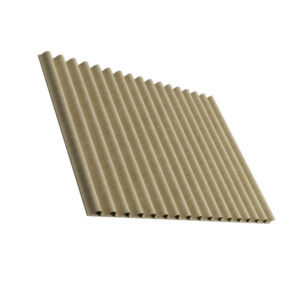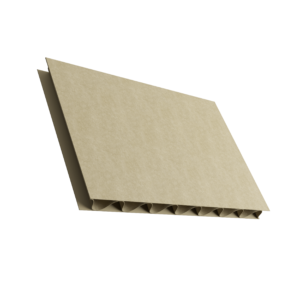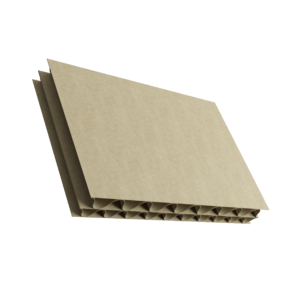With 30 years of experience in producing corrugated cardboard, we’ve become experts in the field. Our journey has been marked by continuous investments, adoption of modern technologies, and the development of a highly skilled team. This has solidified our stable market position and established our significant KNOW-HOW.
We’re dedicated to ensuring our corrugated cardboard meets the highest quality standards and fulfills client expectations. Our three-decade-long experience and deep market understanding enable us to adeptly meet diverse requirements.
Corrugated cardboard is an eco-friendly product, fully recyclable, making it a preferred choice in sustainable practices. Its lightweight nature is appreciated in logistics, as it helps save transport space, reduce fuel consumption, and lower emissions. The basic corrugated cardboard is formed by combining 3 or 5 paper layers,
crafted using a corrugator. This machine shapes the middle layers and adheres them to flat layers to create the final board. Our machine park includes two state-of-the-art corrugators located in Kórnik and Babimost production plants.
We classify corrugated cardboard into 3 primary wave types and 6 composite types.
TFP offers a variety of corrugated cardboards
We utilize white (coated and uncoated) and brown papers (with primary and recycled secondary fibers) in our production.
Besides standard cardboard, we also produce special and ultra-special types.
The minimum size of the sheet is 600 x 200 mm
The maximum sheet size is 4500 x 2460 mm.
Minimum order: 500 linear meters for 3W and 5W waves.
For special cardboards, an additional condition (subject to agreement with TFP Sp. z o.o Customer Service) is loading the corrugator’s width for a minimum of 1500 linear meters for 3W and 5W waves.
For ultra-special cardboards, an additional condition (subject to agreement with TFP Sp. z o.o Customer Service) is loading the corrugator’s width for a minimum of 3500 linear meters for 3W and 5W waves.
Corrugated cardboard is made by alternately gluing flat and corrugated paper layers, classified into various types based on layer count:
 2-layer in roll form (waves E, B, C)
2-layer in roll form (waves E, B, C)
It consists of one flat layer and one corrugated layer. This is the type of cardboard most often used for surface protection in renovations or for wrapping delicate items that require extra protection, but also for packaging using the open-wave printed sheet lamination process.
 3-layer in sheets (waves E, B, C)
3-layer in sheets (waves E, B, C)
It consists of one corrugated layer enclosed between two flat layers.
 5-layer in sheets (waves EE, EB, EC, BE, BB, BC)
5-layer in sheets (waves EE, EB, EC, BE, BB, BC)
It consists of three flat layers and two corrugated layers, in the following configuration: flat layer + corrugated layer + flat layer + corrugated layer + flat layer.
Selecting the appropriate wave type is vital. Higher waves provide better cushioning. However, this is done at the expense of lower bending and flat crushing strength. In this case, this parameter will be higher for the low wave. It is possible to combine several waves in multilayer sheets. The choice of wave depends on the specific application of the cardboard: